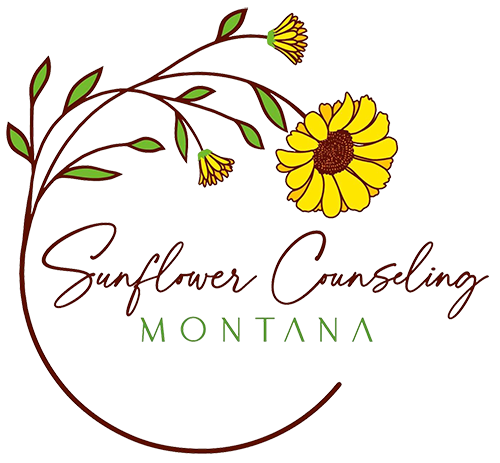
In my last post, I noted that there is an upsurge in sleep problems recently. More likely than not, they are due to current global political issues. I noted that one reality of war is that amazing people rise out of it. This is not to minimize the chaos and tragedy, but any time our life is feeling overwhelmingly negative, it can be helpful to know that some form of good might come of it all.
And I wrote about mindfulness practice. If you haven’t already taken up a regular mindfulness practice, this might be the perfect time to do so. The practice, which grows in strength over time, helps you see your negative thoughts as “just thoughts passing through” and to let go of them when you know they aren’t helpful.
And at night, as we make our way to bed, negative thoughts, worries, concerns, and so on are almost all not helpful. Winding down after a long day, we need to relax and find peace. Our bodies need these hours of calm and ease to repair and restore. Taking this time to set aside the busy world around us allows us to be more active and effective tomorrow and the next day and the next.
Body Scan, an Instant Helper

While developing an effective mindfulness practice will take a few weeks at the least, one practice that can help right away is the body scan. You can practice it right now to get a sense of what is involved.
First, close your eyes (or do that once you’ve read the instructions!). Then, whether you are sitting, standing, or lying down, you can get in touch with your toes. Just wiggle them a little bit. Feel the area around them. Then relax.
Next, stretch your feet a bit. Tilt them from side to side, focusing on everything below the ankle. Moving up, flex the calves once or twice, perhaps pulling your toes back up toward you to elongate the calves. If you feel any tension there, imagine it dissolving into the floor or bed beneath you. Moving up, you can do the same with your thighs, just flexing a bit, bringing awareness to the muscles there, letting go of tension.
Slowly make your way up your whole body, moving out your arms all the way to your fingertips. And then back up your shoulders and neck to the top of your head and around your face, which can hold so much of our day’s tension. As you feel the tension falling from your face, dissolving downward, perhaps in a pillow beneath you, you can notice the weight of your body, delicately supported. You can almost feel the oneness between the mattress and pillow and your body if you are in a bed.
Take one last intentional deep breath in. And exhale.
Coming into your body like this in an intentional and systematic way can break the cycle of worrisome thoughts. It can also tell your brain that it’s time to relax.
Add a visualization
If the body is relaxed but the mind still needs some help, a visualization practice can help. When I was a child and I had trouble sleeping, my mom used to guide me in visualization meditation practices. I still vividly remember one. She told me to imagine that I was a bird on a beach. I noticed the sand beneath my feet, as well as the warm sun and blue sky above.
I wandered up and down the beach, taking in the sounds of the surf and the smell of the salty air. I’m not sure if I had even visited an ocean when I was that age, but the imagery and all of the other sensations came to me as if I was just there.
Then I took flight. I’m not sure why, but imagining flying as I’m trying to go to sleep brings instant relaxation. I could look down on the beach below me, across the fields and into the mountains. I was weightless, effortlessly soaring through the air.
You can try this or a similar visualization. Where ever you are, you can always imagine being in your favorite place. Places in nature tend to work best. That might be a desert landscape, a mountain hillside, a snowy field, or a placid lake.
You can even connect the two practices. Begin with the body scan and as you exhale that last intentional breath, imagine floating on the air out to that special place. Imagine the next inhale coming from there, whether that means warm, salty, sea air or cool, crisp mountain air.
Gratitude, another tool in the toolbelt

If the above practices don’t work, another helpful tool is focusing on gratitude. What are some of the things in your life that are good right now? That might be simply having a roof over your head and a working computer or cell phone. Or it might be a long list of things. Your health, family, friends, community, all can come into a gratitude practice.
You can also think of a positive person in your life or in your past. Who was there for you when you needed them? Who has helped you when you were down?
Developing this practice, we can begin to feel genuinely fortunate. Over the years I have even begun to feel fortunate for some of the biggest setbacks in my life. Through them, I have learned a great deal about who I am and what I value. I have also learned that I can go through a lot and survive.
 Justin Whitaker, Ph.D., holds a doctorate in Buddhist ethics from the University of London. He has given lectures, and taught Buddhist studies and Philosophy at Oxford University, the University of Hong Kong, the University of Montana, and at Antioch University’s intensive study-abroad program in India. A certified meditation teacher, he is a regular contributor to Patheos.com, and Senior Correspondent for Buddhistdoor Global. He lives in Missoula with his family.
Justin Whitaker, Ph.D., holds a doctorate in Buddhist ethics from the University of London. He has given lectures, and taught Buddhist studies and Philosophy at Oxford University, the University of Hong Kong, the University of Montana, and at Antioch University’s intensive study-abroad program in India. A certified meditation teacher, he is a regular contributor to Patheos.com, and Senior Correspondent for Buddhistdoor Global. He lives in Missoula with his family.
